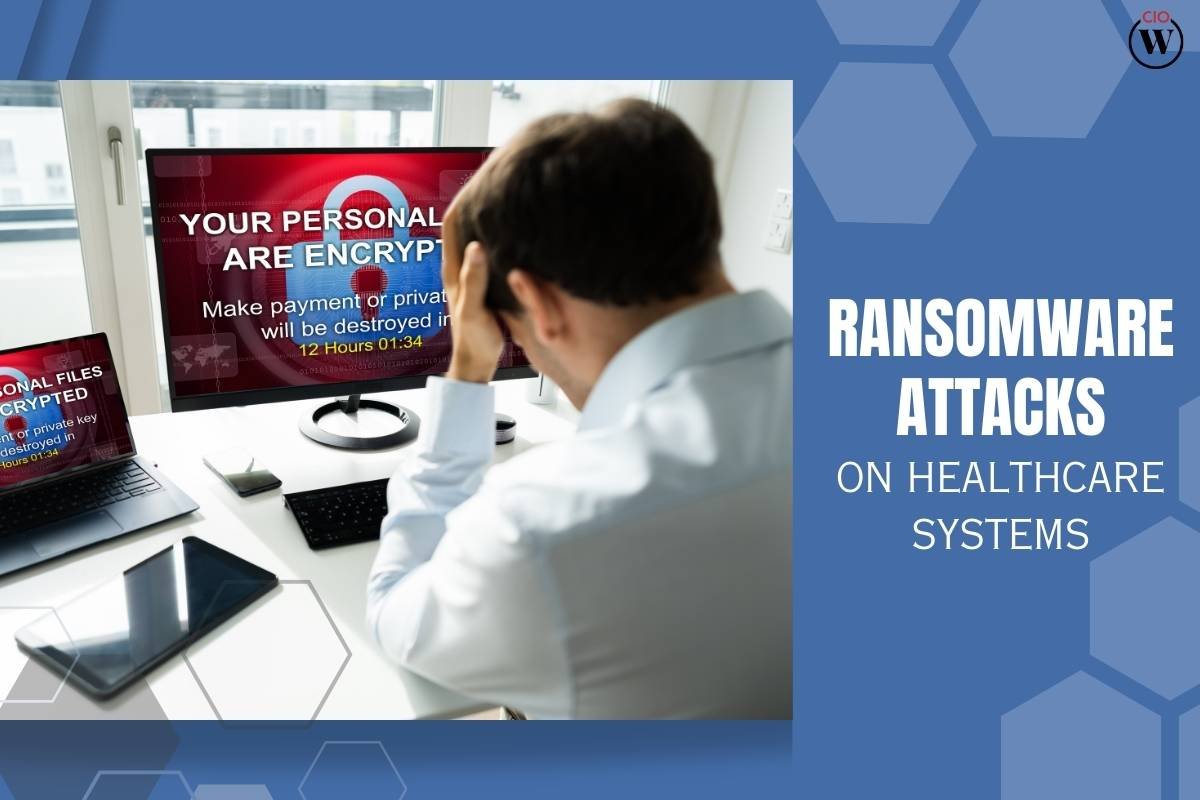In the interconnected world we live in, the vulnerability of critical infrastructure, particularly healthcare systems, to cyber threats has become increasingly apparent. One of the most insidious and damaging forms of cyberattacks that have emerged in recent years is ransomware attacks on healthcare systems. These attacks pose a severe threat to patient safety, compromise sensitive medical data, and disrupt essential healthcare services. In this article, we will delve into the growing menace of ransomware attacks on healthcare systems, exploring the implications, causes, and, most importantly, strategies to fortify the defenses of these critical institutions.
The Landscape of Ransomware Attacks on Healthcare Systems:
Ransomware attacks involve malicious actors infiltrating a computer system, encrypting its data, and demanding payment – usually in cryptocurrency – for the release of the information. Healthcare systems have become prime targets for these attacks due to the sensitive nature of the data they handle, including patient records, medical histories, and treatment plans. The consequences of such attacks can be far-reaching, affecting not only the institutions directly targeted but also the broader community relying on uninterrupted healthcare services.
The Vulnerabilities Exploited:
Healthcare systems often face unique challenges that make them susceptible to ransomware attacks. Legacy systems, outdated software, and a lack of robust cybersecurity measures make these institutions attractive targets for cybercriminals. The interconnected nature of modern healthcare infrastructure, where various devices and systems communicate to provide efficient patient care, also increases the attack surface for malicious actors.

Furthermore, the urgency of healthcare services leaves little room for downtime, making institutions more likely to consider paying ransoms to quickly regain access to critical data. This creates a vicious cycle, encouraging attackers to continue targeting healthcare systems for financial gain.
The Human Cost:
Beyond the financial implications, ransomware attacks on healthcare systems can have dire consequences for patient safety. In the midst of an attack, healthcare providers may struggle to access vital patient information, resulting in delayed or compromised medical care. In emergency situations, where every second counts, these delays can be a matter of life and death.
Moreover, the exposure of sensitive patient data raises ethical concerns and erodes public trust in healthcare institutions. Patients rightly expect their personal health information to be handled with the utmost care and confidentiality. When this trust is breached, it can have long-lasting implications for both individuals and the healthcare system as a whole.
Notable Incidents:
Several high-profile ransomware attacks on healthcare systems have highlighted the severity of the issue. In 2017, the WannaCry ransomware swept through the global healthcare sector, impacting the operations of hospitals and clinics in multiple countries. More recently, in 2021, the Irish Health Service Executive (HSE) fell victim to a significant ransomware attack, causing widespread disruptions and underscoring the urgent need for improved cybersecurity measures.
Causes of Vulnerability:
Understanding the root causes of vulnerability is crucial to developing effective strategies for preventing ransomware attacks on healthcare systems. One key factor is the reliance on outdated technology and the slow adoption of modern cybersecurity practices. Many healthcare institutions continue to use legacy systems that lack essential security updates, making them easy targets for cybercriminals.
Additionally, the lack of awareness and training among healthcare staff regarding cybersecurity best practices contributes to the susceptibility of these systems. Human error, often in the form of clicking on phishing emails or using weak passwords, remains a prevalent entry point for ransomware attacks.
The Role of Nation-State Actors:
Ransomware attacks on healthcare systems are not solely the work of independent hackers seeking financial gain. Nation-state actors, with political motives, have been implicated in some high-profile incidents. These actors may target healthcare infrastructure to disrupt the operations of a rival nation or gain access to sensitive information for strategic purposes.

In such cases, the geopolitical implications of ransomware attacks on healthcare systems extend beyond financial considerations, emphasizing the need for international cooperation in addressing cyber threats.
Mitigating the Threat:
As the frequency and sophistication of ransomware attacks on healthcare systems continue to rise, it is imperative to implement effective mitigation strategies.
Here are some key steps that healthcare institutions can take to enhance their cybersecurity posture:
- Investing in Cybersecurity Infrastructure:
Healthcare organizations must allocate resources to update and modernize their cybersecurity infrastructure. This includes implementing robust firewalls, regularly updating software, and investing in advanced threat detection systems.
- Regular Training and Awareness Programs:
Educating healthcare staff about cybersecurity best practices is crucial in preventing ransomware attacks. Training programs should cover topics such as recognizing phishing attempts, creating strong passwords, and understanding the potential consequences of a security breach.
- Incident Response Planning:
Developing comprehensive incident response plans is essential for minimizing the impact of a ransomware attack. These plans should outline the steps to be taken in the event of a breach, including communication protocols, data recovery processes, and coordination with law enforcement agencies.
- Regular Data Backups:
Regularly backing up critical data is a fundamental preventive measure. In the event of a ransomware attack, having up-to-date backups ensures that healthcare institutions can restore their systems without succumbing to the pressure of paying ransoms.
- Collaboration and Information Sharing:

Healthcare institutions should collaborate with each other and share information about emerging cyber threats. This collaborative approach can enhance collective cybersecurity resilience and enable timely responses to evolving attack techniques.
- Engaging with Cybersecurity Experts:
Seeking the expertise of cybersecurity professionals can help healthcare organizations identify and address vulnerabilities. Conducting regular security audits and penetration testing can proactively identify weak points in the system and allow for timely remediation.
- Advocating for Legislative Support:
Governments and regulatory bodies play a crucial role in addressing the cybersecurity challenges faced by healthcare systems. Advocacy for comprehensive cybersecurity regulations and standards can provide a legal framework to enforce best practices and hold institutions accountable for lapses in security.
Conclusion
Ransomware attacks on healthcare systems pose a grave threat to the heart of our society’s well-being. The intersection of technology, patient care, and sensitive data makes these institutions attractive targets for malicious actors seeking financial gain or with more sinister motives. It is imperative for healthcare organizations to prioritize cybersecurity, invest in modern technology, and educate their staff to mitigate the risk of ransomware attacks.
As the healthcare industry continues to digitize and integrate innovative technologies, the need for robust cybersecurity measures becomes even more critical. The human cost of these attacks, in terms of compromised patient safety and breached trust, underscores the urgency of proactive and collaborative efforts to secure healthcare systems against the evolving landscape of cyber threats. By implementing preventive measures, fostering international cooperation, and advocating for regulatory support, we can collectively safeguard the heartbeat of society and ensure that healthcare remains a sanctuary of trust, reliability, and safety for all.









